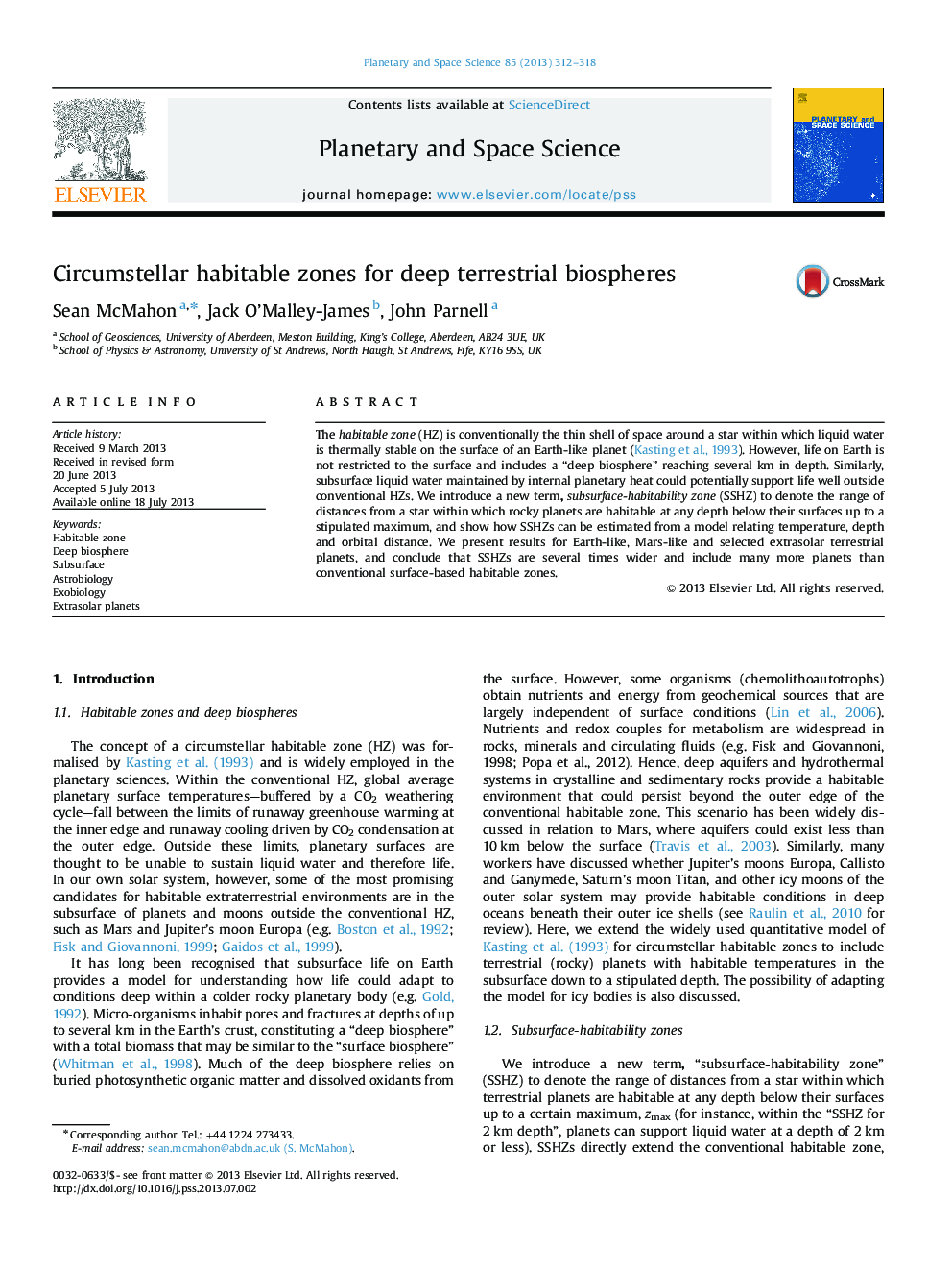| Article ID | Journal | Published Year | Pages | File Type |
|---|---|---|---|---|
| 8144045 | Planetary and Space Science | 2013 | 7 Pages |
Abstract
The habitable zone (HZ) is conventionally the thin shell of space around a star within which liquid water is thermally stable on the surface of an Earth-like planet (Kasting et al., 1993). However, life on Earth is not restricted to the surface and includes a “deep biosphere” reaching several km in depth. Similarly, subsurface liquid water maintained by internal planetary heat could potentially support life well outside conventional HZs. We introduce a new term,subsurface-habitability zone (SSHZ) to denote the range of distances from a star within which rocky planets are habitable at any depth below their surfaces up to a stipulated maximum, and show how SSHZs can be estimated from a model relating temperature, depth and orbital distance. We present results for Earth-like, Mars-like and selected extrasolar terrestrial planets, and conclude that SSHZs are several times wider and include many more planets than conventional surface-based habitable zones.
Related Topics
Physical Sciences and Engineering
Earth and Planetary Sciences
Geophysics
Authors
Sean McMahon, Jack O'Malley-James, John Parnell,
